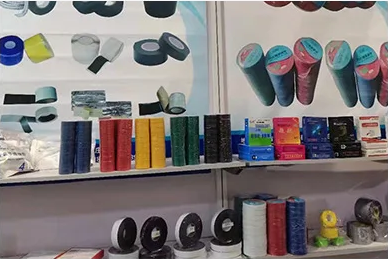The Importance of Tape and Rubber Insulation in Electrical Applications
In the realm of electrical applications, safety and efficiency are paramount. Among the various materials that facilitate safe electrical practices, tape and rubber insulation play crucial roles. These components are essential for protecting wiring, ensuring durability, and enhancing the overall functionality of electrical systems.
What is Tape Insulation?
Tape insulation, often referred to as electrical tape, is a versatile product made from materials such as PVC, rubber, or vinyl. It is designed to insulate electrical wires and connections, preventing short circuits and protecting against electrical shock. Electrical tape is available in various colors, aiding in color-coding systems for different circuits and providing a quick visual reference for technicians.
The application of tape insulation is not limited to wires; it is also commonly used to wrap and protect components in a variety of electrical devices. By adhering to the surface of wires and connecting points, tape insulation creates a protective barrier that resists moisture, chemicals, and physical abrasion. This durability is especially important in environments where wires may be exposed to harsh conditions, such as in outdoor installations or industrial settings.
The Role of Rubber Insulation
Rubber insulation is another critical component in the electrical insulation domain. Made from natural or synthetic rubber, this type of insulation possesses excellent dielectric properties, making it an ideal choice for protecting high-voltage cables and wires. Rubber not only provides protection against electrical leakages but also offers resilience against environmental factors like temperature fluctuations, UV radiation, and ozone exposure.
tape rubber insulation

One of the most significant advantages of rubber insulation is its flexibility. This quality allows installers to navigate complex configurations without compromising the integrity of the insulation. Rubber insulation is often employed in power cables, extension cords, and a wide range of electrical appliances, providing a reliable shield that enhances safety.
Advantages of Using Tape and Rubber Insulation Together
Combining tape and rubber insulation can lead to superior protection for electrical systems. For instance, using rubber insulation on wires provides a robust foundational barrier, while electrical tape can be used for additional reinforcement at connections and splices. This layering approach offers enhanced protection and ensures that any potential weaknesses in the insulation are addressed.
Furthermore, these insulating materials contribute significantly to the longevity of electrical systems. By effectively preventing moisture ingress, physical damage, and exposure to harmful chemicals, tape and rubber insulation help maintain the integrity of wiring and components over time. This durability not only reduces the need for frequent repairs but also ensures that electrical systems remain compliant with safety standards.
Conclusion
In conclusion, tape and rubber insulation are indispensable in ensuring safety and reliability in electrical installations. Their ability to provide protective barriers against a variety of environmental and operational hazards makes them essential components in both residential and industrial settings. As technology continues to evolve, advancements in insulation materials will further enhance the performance and safety of electrical systems. Prioritizing the use of high-quality tape and rubber insulation is not just a matter of compliance; it’s a crucial step toward creating a safer and more efficient electrical environment for everyone.
-
XIANGFAN Rubber Tape-Ultimate Solutions for All Your Insulation NeedsNewsJun.24,2025
-
XIANGFAN Rubber Tape-Protection for Industrial and Residential ApplicationsNewsJun.24,2025
-
XIANGFAN Rubber Tape: Superior Safety and Sealing for Demanding EnvironmentsNewsJun.24,2025
-
XIANGFAN Rubber Tape: Reliable Solutions for Every Electrical ChallengeNewsJun.24,2025
-
XIANGFAN Electrical & Industrial Tape: Powering Reliability Across IndustriesNewsJun.24,2025
-
XIANGFAN Electrical & Industrial Tape: Excellence in Every ApplicationNewsJun.24,2025
